The most important step in preparation is getting the right kind of hair. Buy your hair at a reliable source. Good spinning hair patches are dense and have little underfur. The single natural hair should be dull and light at the base, slightly waved at the root, and have a short tapered tan/black tip section.
Preparation
The most important step in preparation is getting the right kind of hair. Buy your hair at a reliable source. Good spinning hair patches are dense and have little underfur. The single natural hair should be dull and light at the base, slightly waved at the root, and have a short tapered tan/black tip section.
Smooth, shiny, and thin hair is not suited for spinning. Try a few different types, and you will soon be able to judge hair yourself.
- All hair should be selected specifically for spinning. Hair for EHC's, comparaduns etc. is not suitable
- If the hair is dirty or oily, soak it in water and wash it using shampoo and treat it with hair conditioner. Dry thoroughly
- If the hair is curled, very curved or has been squeezed, freshen the whole patch over steam
- Cut a suitable bunch - typically the diameter of a pencil - and remove all underfur with your fingers, a comb or a dubbing needle
- Trim the butts of the longest hairs
Quality hair


Stacking the hair
The stacking process is important if you want a nice looking, even collar on the fly. By trimming the hair before tying it in you save a lot of trouble in the final trimming process.
- Use a stacker large enough to acommodate the hair
- Put the hair into the stacker tips first if it's of the common open end type
- If you use lightly circling motion while inserting the hair, most tips will be caught by the stacker
Measuring hair length


- Remove stray hairs
- Tap the stacker lightly against a hard surface using the right hand. Tilting the stacker will aide the stacking process
- Tilt the stacker to an almost horizontal position and take it carefully apart
- Remove the bunch of hair by grabbing the tips hard with your left hand fingers
- Trim the butt ends to a length a bit longer than double the collar length (two times 2 on the drawing above)
- Reassemble the stacker and reinsert the hair tips first
- Repeat the tapping, removal and trimming, this time trimming the hair slightly shorter than double the collar length (1+2 on the drawing above)
- Do not let go of the hair or shift direction of the bunch to the other hand!
A certain routine will insure that the hair is even when you are ready to tie it in. Make sure that you remove the hair with your non-tying hand (left hand for right hand tyers). Do not let go of the hair or shift it too much from hand to hand. This will totally uneven the tips of the newly stacked bunch.
Selecting a thread
- Use a strong and preferably flat thread. I like the following brands:
- Bennechi GSP. The thread is extremely strong, but must be flattened before tying to avoid cutting the hair
- Monochord. A strong and easily flattened thread, but also thick
- Gudebrod. A fairly new and strong tying thread. Flattens fairly well.
- Thinner threads like Uni-Thread 8/0 can cut the deer hair and will break easily
- Kevlar thread is strong, but difficult to work with because of stiffness and a rough surface. Its strength is actuelly only needed for the largest and most dense flies. It's very thick and not suited for smaller flies
- It can be recommended to change thread before spinning the deer hair. Finish the normal tying thread with a whip finish and some varnish, and start the stronger thread
Spinning the collar
- Transfer the hair to the right hand and measure it for length and placement
- Hold the hair tightly by the butts at an angle to the shank, tips pointing slightly upwards
- Press the hair firmly in place in this position with the left hand
- Lay one and then a second loose turns of thread over the hair at the point where you want it tied in
- Lay a third turn over the two previous ones, but this time draw the thread steadily tighter while letting go of the bunch
- When this is properly done, the hair will flare and spin 180 deg. around the hook shank
- Pass two more tight turns through the bunch, but be careful not to tie down any tips or butts
- You can control the spinning by holding on to the hair and guiding it i.e. on top of the shank. This can sometimes save some later trimming
- Lay a few more turns in front of the bunch and secure with varnish
Spinning the rest
- Prepare each bunch of hair by removing the underfur and trimming the longest hairs
- The diameter of each bunch should again be as a pencil - smaller for smaller flies
- Stacking in a hair stacker should not be necessary, but somtimes evening the butts can be convenient
- Some tyers prefer to turn one half of the bunch so that the tips point opposite the other half. This can result in a more even bunch, but will also make the bunch harder to handle
- Some tyers prefer to trim the tips before tying in the bunch. This will make the bunch a bit easier to handle, but also have the effect that it makes tying in the next bunch a bit harder
- Lay the first bunch in front of the collar in an angle with the tips pointing upwards
- Stroke back the butts and tips on the already tied in bunch. This can be a bit difficult if the butts are too short
- Again lay two loose turns of thread over the bunch in your hand at the point where you want it tied in
- Lay a third turn over the two previous ones, but this time pull the thread tighter while letting go of the bunch
- When this is properly done, the hair will flare and spin 180 deg. around the hook shank
- Take two more turns through the flared bunch, stroke it back and take a few turns on the shank in front
- Use either your fingers or a tool like 'Brassie' to compact the hair. This will result in a much denser and better looking head
- Add a drop of laquer in the base of the bunch and continue with the next
- When you get near the hook eye making the bunches a bit smaller might help you tie in more hair
- Finish the thread by taking a few turns right behind the eye and making a whip finish or a couple of half hitches using a tube or a discarded ball pencil with the pen removed
- Varnish the thread and base of front hairs and let dry thoroughly before trimming

![]()
Brassie hair packer
Remember: There is always room for one more small bunch, and it's these last few hairs that will make your muddler head denser and smoother than the rest out there. I personally like the hook eye to be almost covered by hair, but some people find this too obstructive when they are tying the fly on the tippet.
Trimming the head
The trimming part of the muddler game is the fun part - and the hard part. When you have spend a long time spinning your first muddlers, you can be almost sure that you will trim them to death.
There are ways to avoid overtrimming the head and assure a smooth, even and symmetrical surface. I like my muddlers to have clearly defined, conical, slightly flattened heads with a clear back edge. Other tyers may choose differently.
- Using a true rotary vice makes the process much easier. Without this available I prefer using my hands for the rough trimming and a vice for the fine tuning
- Use a pair of serrated scissors in the start. The use of razor blades can be recommended for the skilled muddler tyer and can yield some very fine results. I recommend learning to use the scissors first. If you later want to use razor blades, remember to use absolutely new and sharp ones
- The first cuts should indicate the final shape of the head.
- The first four cuts should just form a conical box and will leave a lot of hairs both in the front and back of the head. The angle is indicated as (1) on the drawing bwlow
- Start by cutting the underside of the head
- Cut lightly from the front of the fly avoiding the collar. This should be fairly easy if the butts of the collar are shorter than the tips
- Cut the top of the fly. Be careful not to cut too deep
- Cut the sides of the fly, again avoiding too deep cuts
- Now make four supplemental cuts at a 45 deg. angle to the first ones
Trimming sequence


- Trim the rough ridges with small snips of the scissors, slowly rounding the shape of the head
- The surface of the head should now be quite smooth, but the back somewhat sloppy and the front flat
- Trim the front of the fly using the blades of the scissors to press down the hairs in order to cut close to the hook eye and shank. This is indicated as (2) on the drawing
- Now come in with the scissors between the back of the head and the collar - (3) on the drawing.
- You can press down the tips of the collar with one blade while cutting a clear edge on the back of the head
- Finally brush or steam the fly and trim the last stray hairs
Contacts:
The Brassie hair packer tool is available from:
White Tail Fly Tieing Supplies
7060 White Tail Court
Toledo, OH 43617
USA
Fax: 419 843 2106
This shop also carries high quality hair of all types.
- Log in to post comments

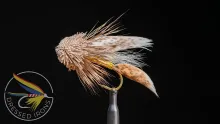
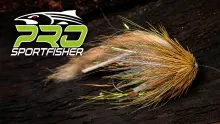
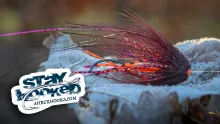
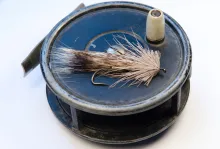
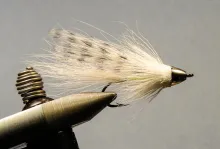
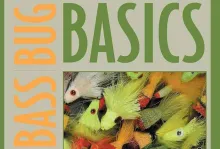

Deer hair takes a lo
Deer hair takes a lot of prcatice. The other day I went thru half a promo skin before I got it right. Just love tying with deer hair now.
I am a Chilean begin
I am a Chilean beginner. I fished with a muddler-like fly and I did wonderful. Now, I am trying to tie it myself... I appreciate the tips. I will let you know how I have done!!!
best full descripti
best full description for muddlers ever, great job. i like to use a little crystal flash, and sometimes a zonker tail.